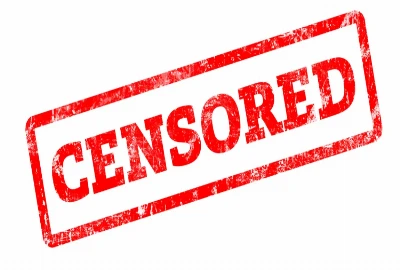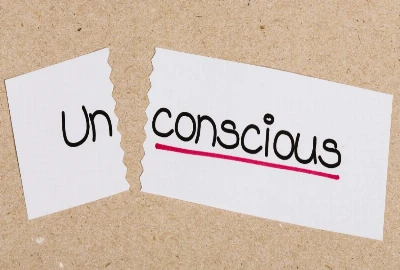Memes as Metadata: How Internet Humor Is Archiving Pop Culture in Real Time

Memes have evolved far beyond simple jokes or online entertainment—they’ve become digital fossils of collective experience. When future historians study the early 21st century, they won’t just sift through newspapers or academic papers; they’ll scroll through meme archives. Each meme encapsulates a specific mood, event, or social dynamic, serving as a timestamped reaction to the moment.
Memes as Emotional Snapshots
Every viral meme captures not only humor but also the emotional climate of its time. A meme about lockdown boredom during 2020, for instance, reveals more about collective anxiety and coping mechanisms than a thousand news headlines. These fragments of humor become historical annotations—showing how people felt, adapted, and joked their way through crises.
The Evolution of Meme Language
From early rage comics on Reddit to TikTok’s remix culture, meme formats have transformed alongside the platforms that host them. Each format reflects the technological context of its era: the slow, image-heavy memes of 2010s Tumblr gave way to the fast, looping humor of TikTok and Instagram Reels. The speed of meme evolution mirrors the acceleration of digital communication itself, encoding cultural shifts in style, tone, and audience participation.
Why Memes Matter as Cultural Data
Academics and data scientists are increasingly viewing memes as metadata—cultural markers that can be analyzed for trends in humor, language, and ideology. They reflect who we are, what we value, and how we process information. In essence, memes document the zeitgeist not through formal records but through collective improvisation and shared laughter.
Digital Anthropology: Studying the Meme Ecosystem

If anthropology studies how people create meaning, then memes are its newest field of exploration. They’re social artifacts that reveal how communities interact, form identities, and negotiate meaning in digital spaces.
Memes as Social Connectors
At their core, memes function as shared reference points. When someone shares a meme about work-from-home burnout or student debt, it instantly connects those who relate. These cultural shortcuts allow people to express complex emotions with minimal words. In online ecosystems like Twitter and Discord, memes serve as linguistic glue—unifying global audiences through irony and humor.
The Role of Platforms in Meme Circulation
Each social media platform shapes meme culture differently. Twitter thrives on fast-paced, text-based humor; Instagram favors visual trends; TikTok builds entire microgenres around sounds and short video loops. The architecture of these platforms influences not just how memes spread but what they mean. The same meme can evolve into multiple versions across different communities, reflecting the pluralism of internet culture.
Memes and Digital Ethnography
Researchers are now using memes to map digital behaviors—tracking how cultural information moves through online communities. Meme trends reveal migration patterns of humor: how jokes start on niche subreddits and eventually reach mainstream timelines. This digital ethnography shows that memes don’t just entertain; they encode cultural migration, adaptation, and remixing in real time.
Memes as Pop Culture Archives

Memes act as living archives of pop culture, cataloging everything from celebrity scandals to political upheavals. Unlike traditional archives, memes are decentralized, crowd-sourced, and participatory—anyone can contribute, modify, or reinterpret a piece of cultural data.
Capturing Viral Moments
Think of memes about the Oscars slap, political debates, or Barbiecore aesthetics. Each one reflects a moment that dominated global attention, but the memes often outlast the original events. They serve as mnemonic anchors—reminding audiences of what mattered and how people collectively processed it.
Remixing History Through Humor
Memes also function as commentary, remixing historical or cultural imagery to make sense of the present. A meme comparing ancient empires to modern fandoms or politicians to pop icons exemplifies how humor becomes a tool for historical synthesis. Through these juxtapositions, users turn entertainment into participatory history-writing.
The Archive Without an Archivist
Unlike traditional institutions, meme archives are self-organizing. Platforms like Know Your Meme attempt to document origins, variations, and meanings, but the true archive lives across feeds, reposts, and screenshots. This fluidity makes memes uniquely democratic—anyone with a sense of humor becomes both creator and curator of cultural memory.
The Data Behind the Laughter: Memes as Metadata

Beyond humor, memes carry layers of information—visual, emotional, linguistic, and contextual. This metadata provides insights into how societies encode and transmit meaning online.
How Memes Encode Context
Every meme carries hidden metadata: the original image source, caption evolution, usage frequency, and demographic reach. A simple “distracted boyfriend” meme, for example, has been repurposed thousands of times to represent shifting priorities in relationships, politics, and economics. Each iteration adds a layer of metadata that chronicles changing social narratives.
Algorithms and Meme Virality
Platforms’ recommendation algorithms determine which memes gain visibility. In effect, these systems become curators of cultural relevance. The data trails—likes, shares, duets, stitches—create a quantifiable record of what humanity collectively found funny, tragic, or absurd. When analyzed, these trails reveal emotional cycles, political leanings, and even public sentiment during crises.
Memes as Linguistic and Semantic Data
Linguists and AI researchers use memes to train models on slang, irony, and visual language. Because memes combine text and imagery in context-rich ways, they serve as invaluable datasets for understanding how digital communication evolves. They represent one of the few forms of content that continually adapts to both human creativity and machine interpretation.
The Future of Meme Archiving and Digital Memory

As memes continue to shape online discourse, questions arise about how to preserve them. Can we treat memes as legitimate historical artifacts? And if so, who decides what gets remembered?
The Problem of Digital Decay
Despite their ubiquity, memes are surprisingly fragile. Deleted posts, defunct platforms, and algorithmic shifts can erase years of cultural output overnight. This impermanence poses a challenge for historians: how do you document an art form designed to disappear as fast as it spreads? Efforts like Internet Archive’s Meme Museum aim to address this gap, but preservation remains uneven and community-driven.
AI and Automated Meme Curation
Artificial intelligence could play a role in preserving meme history. Machine learning models can detect visual similarities, categorize humor styles, and trace origins across platforms. By treating memes as metadata, AI can help organize the chaos—indexing cultural evolution through humor. However, this also raises ethical concerns about surveillance, ownership, and the authenticity of digital memory.
Memes as the Future of Public Memory
Ultimately, memes represent the democratization of cultural archiving. They are the crowd’s record—the people’s history written in pixels and punchlines. Future generations may not read our tweets or watch our vlogs, but they’ll understand our worldview through memes. Whether it’s absurdist humor about climate change or sardonic takes on capitalism, memes capture our contradictions better than any textbook ever could.




